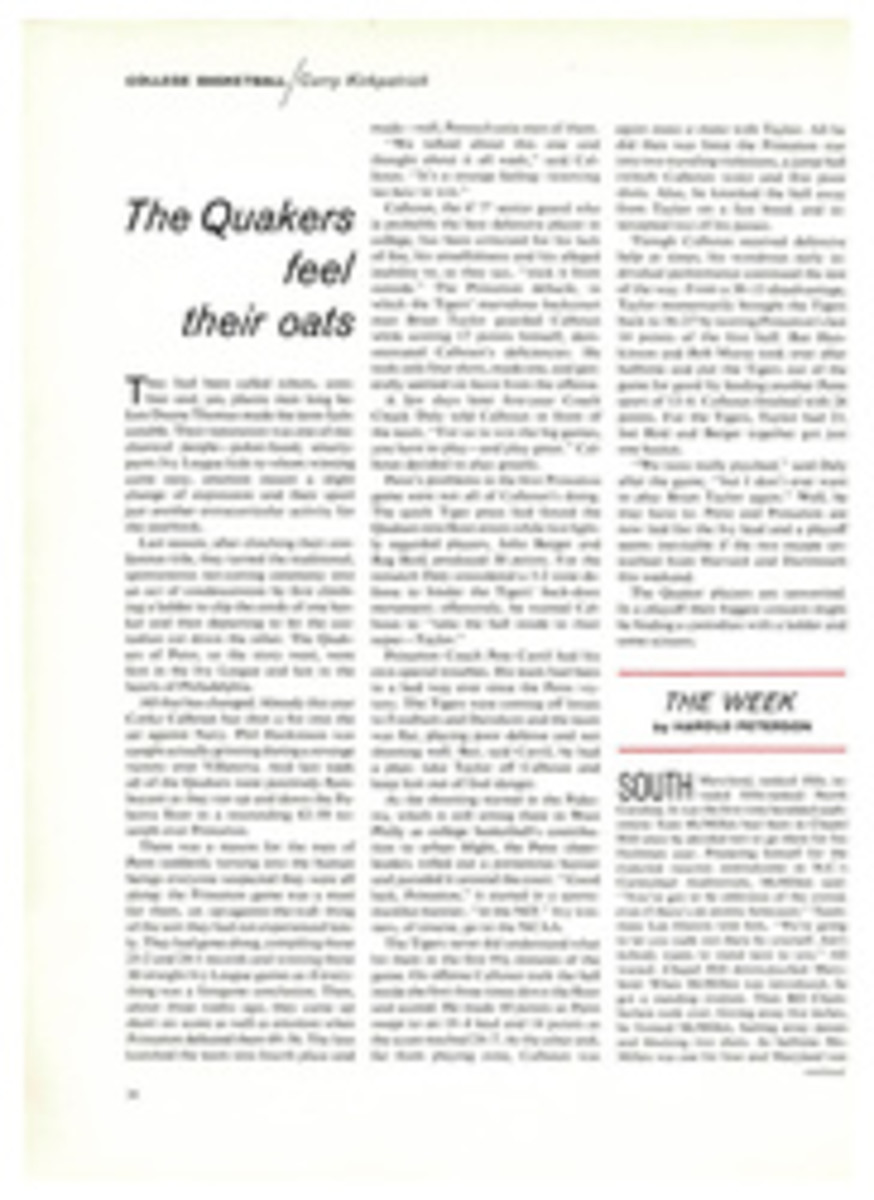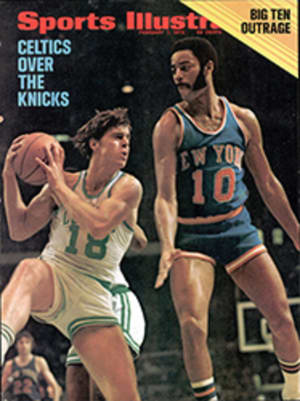
SCRAMBLE BACK TO THE DEEP PURPLE
The Minnesota Vikings took a Giant step toward Super Bowl VII last week when they reclaimed veteran quarterback Fran Tarkenton from New York. The little man, gone for five years, was missed in Minneapolis.
The Vikings paid a fair price for Tarkenton, yet not a price that weakens the team materially. They gave up Bob Grim, an All-Pro wide receiver, Norm Snead, a peripatetic quarterback who languished on the bench for most of 1971, Vince Clements, a rookie running back who sat out the season after a knee operation, and two draft choices—their No. 1 this year and No. 2 in 1973.
"We suffered from a lack of offense all last season," said Jim Finks, the general manager of the Vikings, who negotiated the deal with Giant President Wellington Mara. "Actually, that is what has killed us for the last two years." Bud Grant, the contained, unemotional coach of the Vikings, regarded the trade with satisfaction, if not with joy unconfined. "Tarkenton is not a savior," he said quietly. "However, I'm sure we will want to utilize his versatility and his mobility; neither Snead nor Gary Cuozzo was really mobile. That's why I went with Bob Lee against Dallas in the playoff game. He could move around enough to negate the Cowboys' pass rush."
Curiously enough, while the return of Tarkenton may put the Vikings into the 1973 Super Bowl, it was his departure in 1967 that helped put them in the 1970 Super Bowl. He was traded to the Giants for two first-and two second-round draft choices; the players obtained with those choices were Clinton Jones, Grim, Ron Yary and Ed White, all of whom became key starters. Grim had good years with the Vikings, but despite his All-Pro status his loss is not regarded as critical by Grant or Finks. Gene Washington, one of the game's best deep receivers, is still on the roster, and there is also John Henderson, who split time with Grim until he was hurt halfway through the season.
Tarkenton himself was overjoyed with the trade. Two days before the last game of the season, he had met with Mara and Alex Webster, the Giant head coach, and asked to be traded, giving them a list of five teams, all of them contenders, to which he would report.
"Well called me a week before the Super Bowl game and asked if we would be interested in Tark," Finks said. "Then on the Friday and Saturday before the game in New Orleans, Well submitted a list of players he was interested in. We talked on the phone every day until the trade was made, taking off some names and adding others until we arrived at a deal both of us could live with."
Finks asked Mara's permission to speak to Tarkenton before the papers were signed. He wanted to be sure that Fran would be reasonable when the salary talk started. Tarkenton's disaffection with the Giants had begun during the 1971 exhibition season, when he asked for a loan in the neighborhood of $300,000 from the management and was refused. Tarkenton needed the loan for business and tax reasons. Finks didn't want any of the same complications this year.
"We'll have no problem at all with Tarkenton about a contract," Finks said. "He called me on Thursday before the deal was announced and we have already come to a tentative agreement."
Aside from the Vikings and the Giants, the team most likely to be affected by the trade is Dallas. Tarkenton is leaving the NFC East Division, where he was often as aggravating to the Cowboys as a burr under the saddle, but the Cowboys still probably will have to beat the Vikings in the playoffs if they are to return to the Super Bowl.
"Tarkenton will make the Vikings a much stronger club," Tex Schramm, the president of the Cowboys, said ruefully. "I don't know how long it will take him to adjust to Bud's system. It's a lot different from the Giants'—a lot simpler and more basic. Grant may have to make some changes to take advantage of his talents."
But as of now, Grant is planning no major changes in his offense. "Tarkenton may have to change his style here," Grant said. "He has been used to playing catch-up football, which means he had to throw the ball a lot and it meant, too, that while he completed a lot of passes for a lot of touchdowns, he didn't win a lot of games."
The Vikings seldom have to play catch-up. They depend on one of football's soundest defenses to control the opposition and force it into errors, then they capitalize on the errors. With Tarkenton pulling the trigger, they should capitalize more often and control the ball even better.
In spite of the fact that he has never played with a truly formidable team, Tarkenton has compiled some extraordinary statistics in his 11 seasons as a pro. Probably the most unusual is the fact that he has never missed so much as a quarter of any game because of injury. When he came to the Vikings as a rookie with a reputation as a scrambler, most of the veterans in the league predicted that he would be lucky to survive the season. Although at six feet and 190 pounds he is small by modern quarterback standards, he is nimble and durable.
And, believe it or not, he ranks among the top five quarterbacks of all time in effectiveness. Only Sonny Jurgensen, John Unitas, Bart Starr and Len Dawson rate ahead of him and all of them have played from four to five years longer than Tarkenton. Three of them—Starr, Unitas and Dawson—have spent much of their playing time with superior teams.
Fran has passed for 216 touchdowns, completing 2,075 of 3,797 passes for 28,484 yards with only 167 interceptions. Obviously, he stops long enough during his scrambles to throw, and throw accurately. At 32, with no past injuries to plague him—unlike the four quarterbacks who have superior statistics—he can probably count on at least seven or eight more productive seasons.
Strangely, not all of the Vikings were enchanted with the return of the scrambler. "I really don't think much of the trade," said Alan Page, the defensive tackle rated the most valuable player in the NFC in 1971. "Tarkenton is a good quarterback, but I don't think anybody's that good."
"We've asked a lot of Alan this year," said Finks, wryly. "But not for help in making trades."
PHOTO
When last seen in action Tarkenton was playing catch-up football for the New York Giants.
PHOTO
When next seen Fran will be wearing his old colors and playing for a front-runner.

